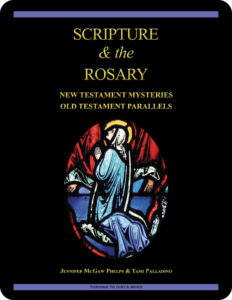Transfiguration
 Transfiguration and transubstantiation are two words with the same prefix. Both describe religious mysteries that are difficult for us to understand. The Transfiguration of Jesus occurs on a mountain where Moses and Elijah also put in appearances. There are a couple of related words deriving from Latin that are especially interesting in the context of the Gospel accounts of Jesus’ Transfiguration.
Transfiguration and transubstantiation are two words with the same prefix. Both describe religious mysteries that are difficult for us to understand. The Transfiguration of Jesus occurs on a mountain where Moses and Elijah also put in appearances. There are a couple of related words deriving from Latin that are especially interesting in the context of the Gospel accounts of Jesus’ Transfiguration.
The Latin word figura means “form” or “appearance.” The prefix trans– means “across,” so as part of a compound word trans- typically indicates change. In this case, Transfiguration literally means “changing form or appearance.” Jesus changed his appearance on the mountain and seemed glorified, though only his appearance was changed. Jesus’ underlying substance or being remained the same the whole time. His Transfiguration allowed his disciples to see him as he really is. All three of the synoptic writers record Jesus’ Transfiguration. You can read their accounts in the Gospel According to Matthew 17:1–8, the Gospel According to Mark 9:2–8, and the Gospel According to Luke 9:28–36. (All three links are to the New American Bible Revised Edition [NABRE].)
By contrast, we describe what happens when bread and wine become the body and blood of Christ by using the word “transubstantiation.” This word describes a change in the underlying substance of a thing regardless of its appearance. The bread and wine actually become something other than they appear, and so while they continue to look like ordinary bread and wine, they are in fact the body and blood of Christ.
These two concepts together concern form and appearance, and highlight that God often chooses to appear in a capacity much more lowly than he actually is. Why do you think God might choose to do this? Consider why Jesus chose to allow some of his disciples to witness him glorified in the Transfiguration.
related topics: bread of life; consecration; “eat my flesh”; holy; metamorphosis; sacred; thanksgiving; transubstantiation
you also may like our study of Scripture & the Rosary (digital only)
 Scripture & the Rosary: New Testament Mysteries, Old Testament Parallels, a 26-lesson Catholic Bible study with an imprimatur, looks at the biblical foundations of the Rosary. The study includes lessons on Pope St. John Paul II’s Rosarium Virginis Mariae (Rosary of the Virgin Mary), the Apostles’ Creed, and the Luminous Mysteries as well as the original 15 Mysteries of the Rosary. Color photographs of stained glass windows depict key scenes in the lives of Jesus and Mary. Free digital lessons rotate throughout the year on our website.
Scripture & the Rosary: New Testament Mysteries, Old Testament Parallels, a 26-lesson Catholic Bible study with an imprimatur, looks at the biblical foundations of the Rosary. The study includes lessons on Pope St. John Paul II’s Rosarium Virginis Mariae (Rosary of the Virgin Mary), the Apostles’ Creed, and the Luminous Mysteries as well as the original 15 Mysteries of the Rosary. Color photographs of stained glass windows depict key scenes in the lives of Jesus and Mary. Free digital lessons rotate throughout the year on our website.
 Click on the picture of the statue of Moses with horns (above) to learn more about Lost in Translation. A new entry is archived each Monday. Contact us to receive Lost in Translation by email every week. You may use any of the contact links on our website to ask Matthew a question.
Click on the picture of the statue of Moses with horns (above) to learn more about Lost in Translation. A new entry is archived each Monday. Contact us to receive Lost in Translation by email every week. You may use any of the contact links on our website to ask Matthew a question.
